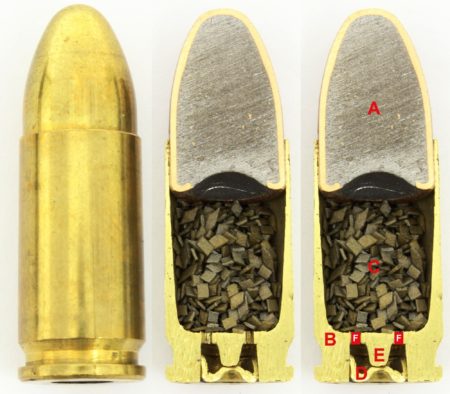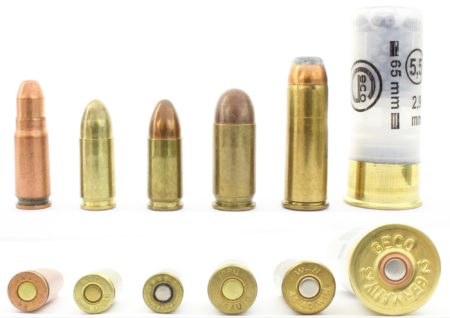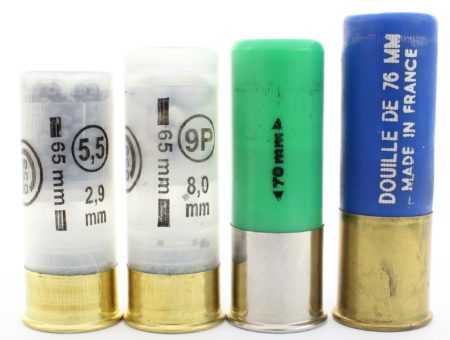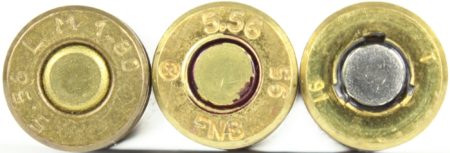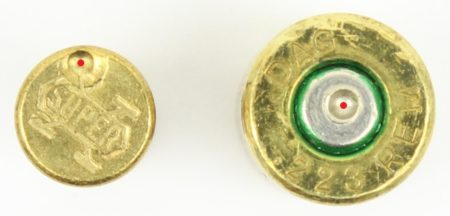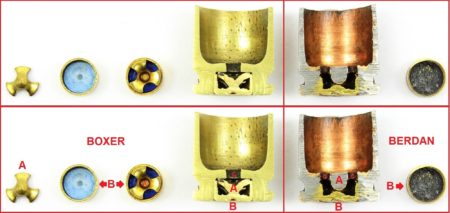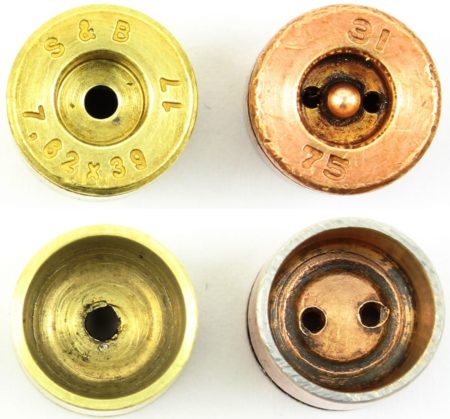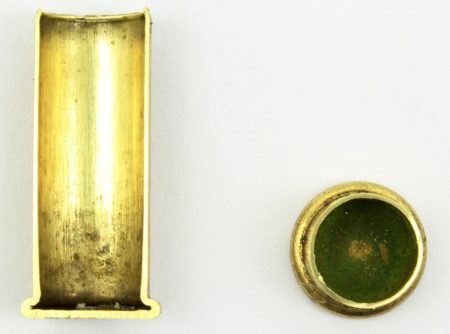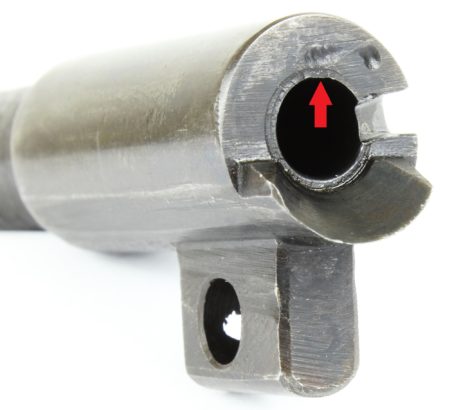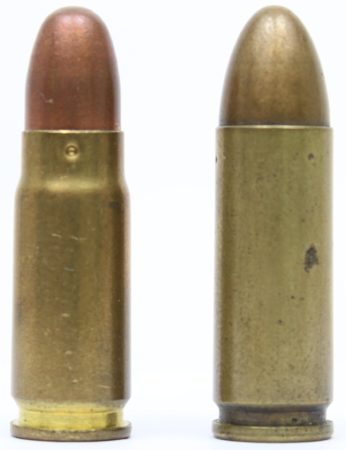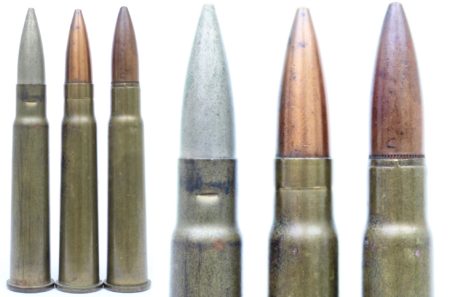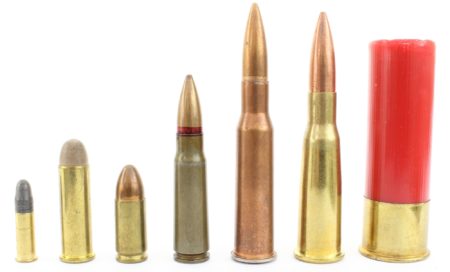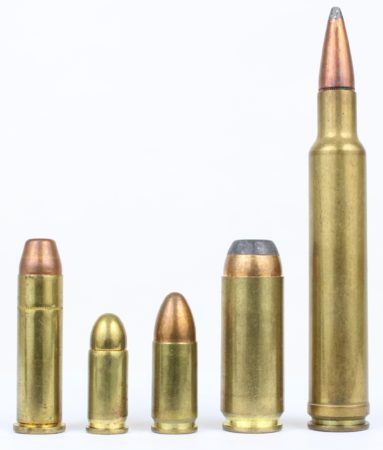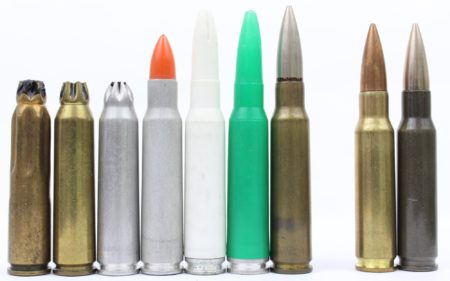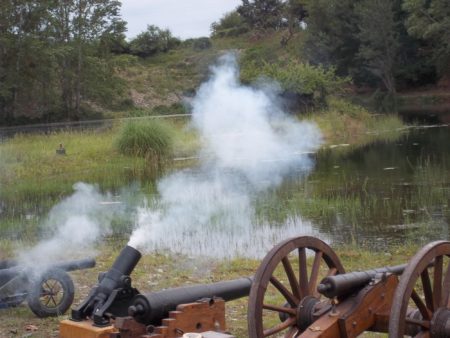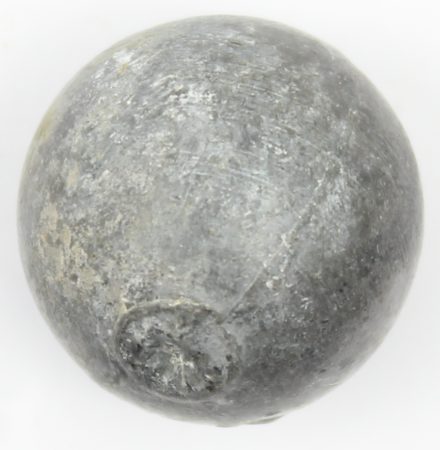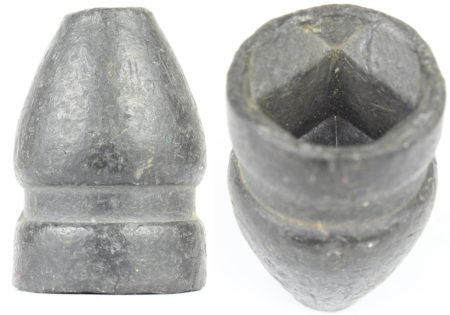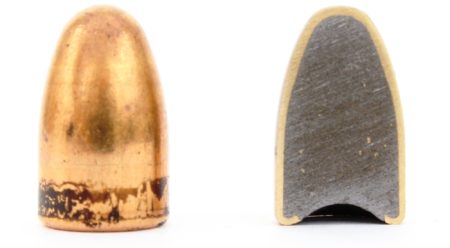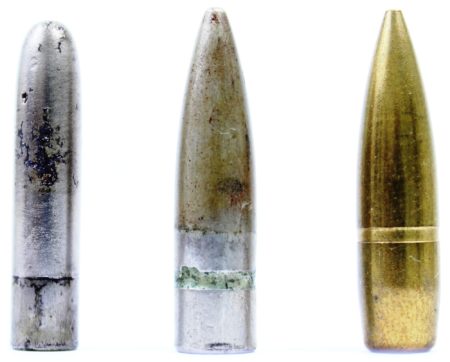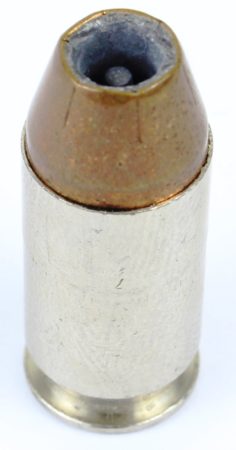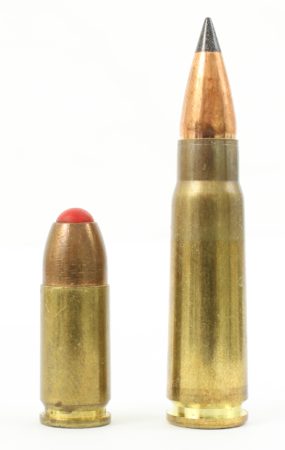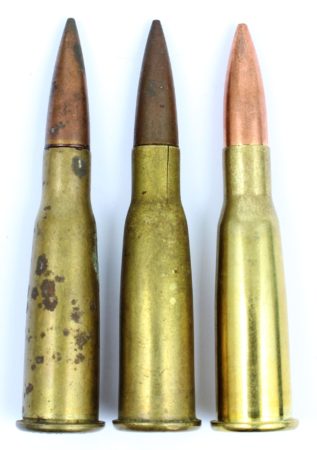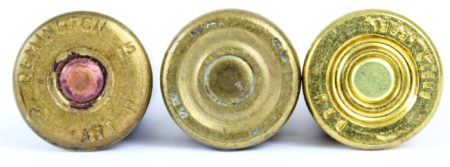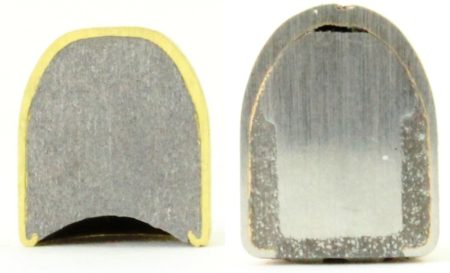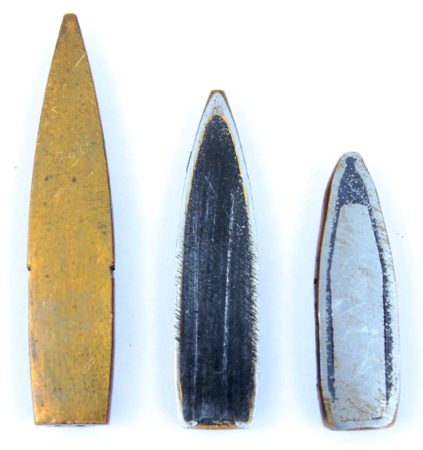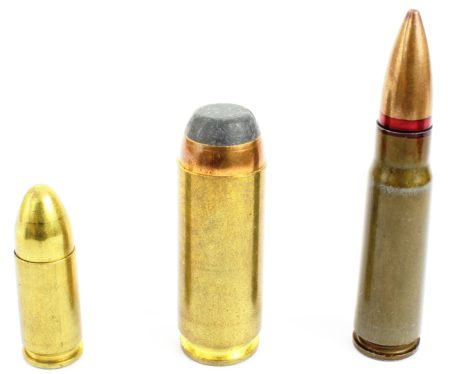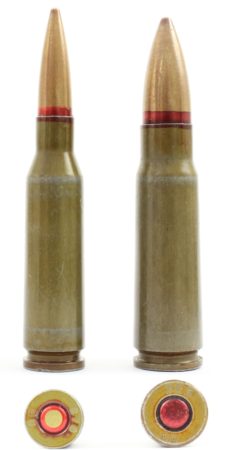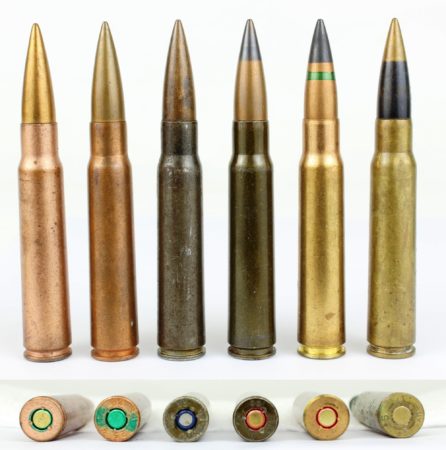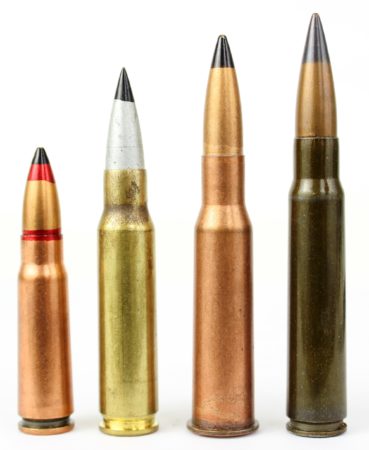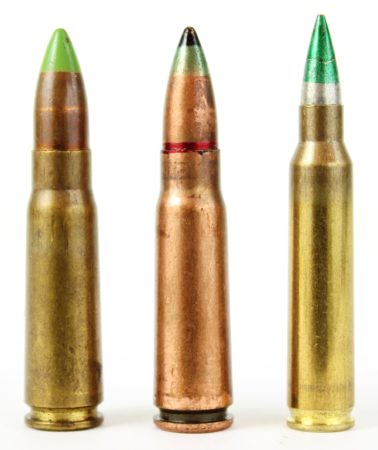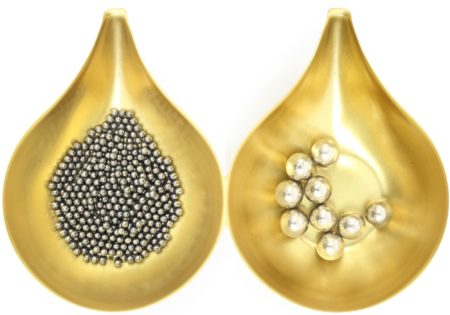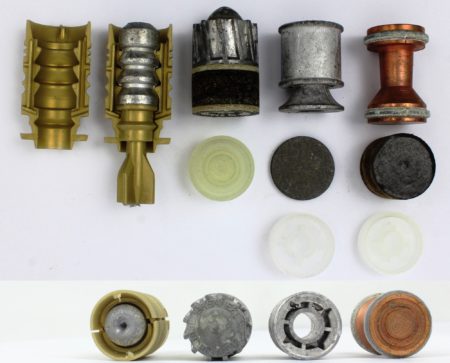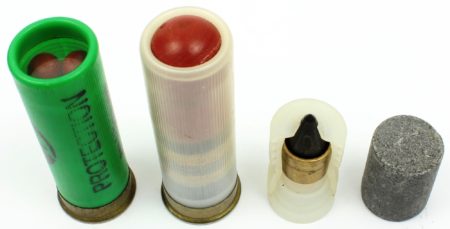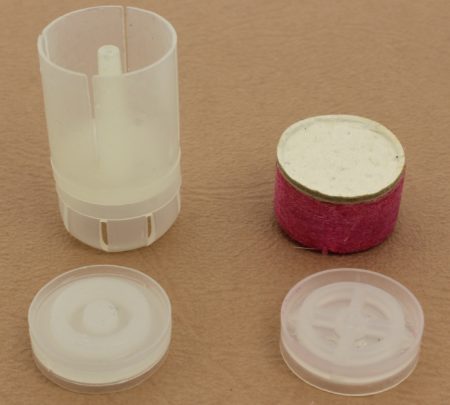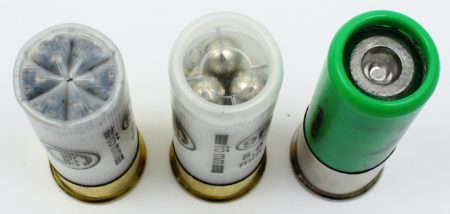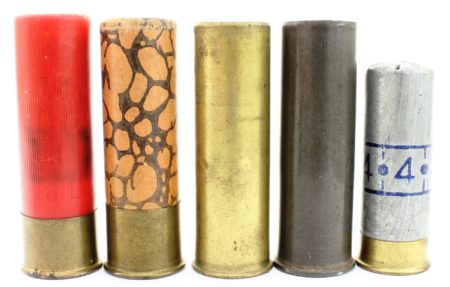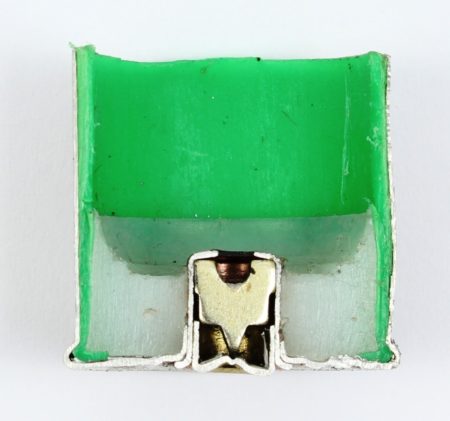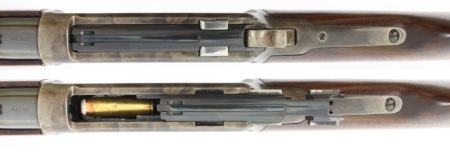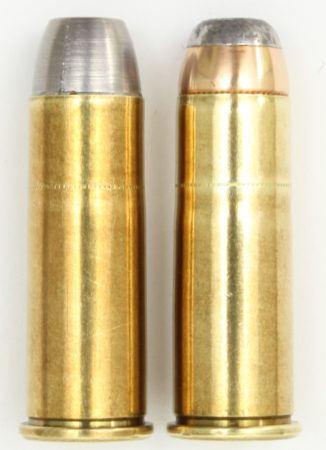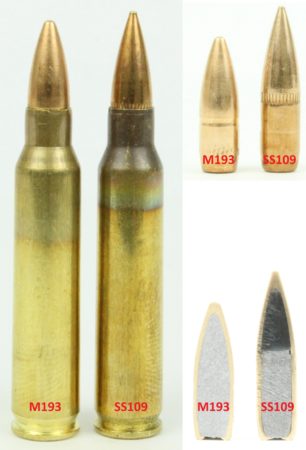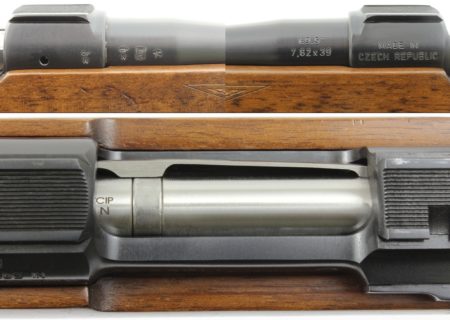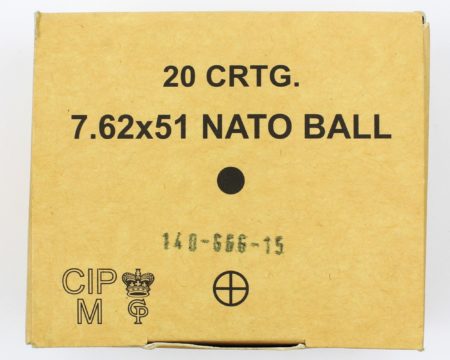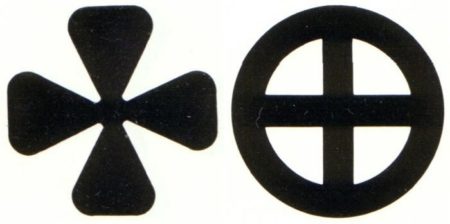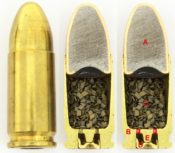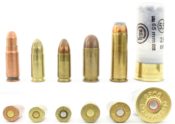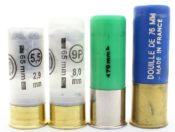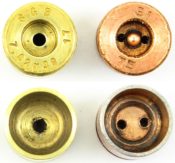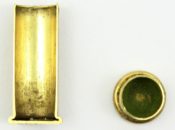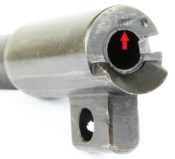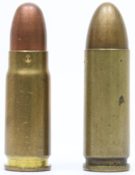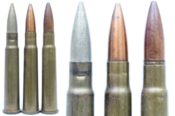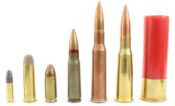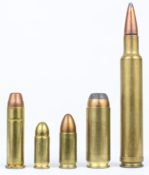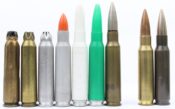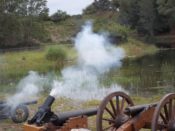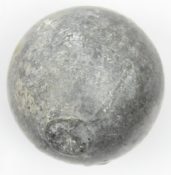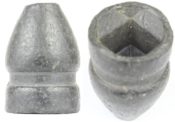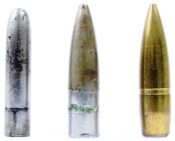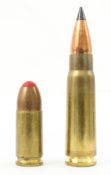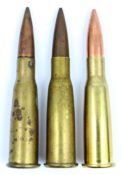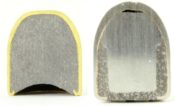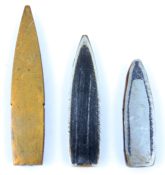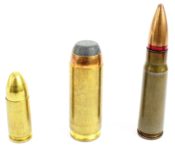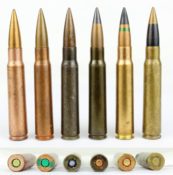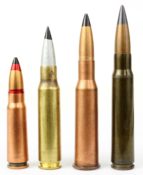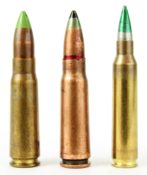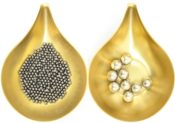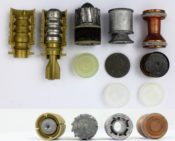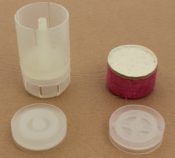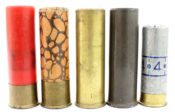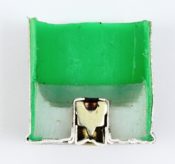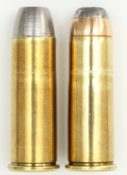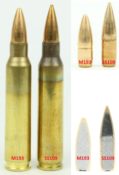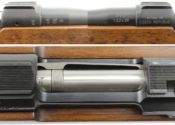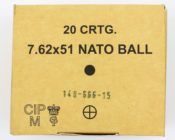
When firing our modern weapons, the firing pin initiates the explosive compound contained in the primer capsule by precipitating it on the anvil. It ignites the powder through the flash-hole(s) of the case. The powder thus ignited generates a significant gaseous release, which in the limited space of the case generates a sharp increase in pressure. At this time, the case expands to fit the walls of the chamber and thus ensures its tightness. Also, under the effect of this same growing pressure, the bullet advances into the barrel. If the weapon is locked, this lock ensures that the case is kept in position. If the weapon is not locked (which may result from a design choice as we will see in Chapter 6), the case moves backwards as the bullet advances into the barrel. (Fig.01)
I. Basics Overview
A-I. Definition.
Before talking about the operation of weapons, it is necessary to talk about ammunition. And for this it is necessary to define the terms in use and in particular those of “caliber” and “ammunition”. We will refer here to the notion of “nominal caliber”, the actual caliber of the weapon being by itself in its barrel, the diameter of bore, often expressed by the diameter measured between opposing lands and sometimes between opposing grooves.
Nominal caliber: this is the name given to a set of dimensional measurements intended to ensure a minimum geometric compatibility between a weapon and ammunition of the same “caliber”. This notion of caliber must be attached imperatively to a standard which prescribes its modalities. We will discuss the topic of standards at the end of the chapter.
Ammunition: it is a set composed of a bullet (or shots), a powder charge, a case and a primer. We also speak of “loadings” to evoke this set when we consider in detail the characteristics of each of these components.
Thus, there is potentially an infinite number of ammunitions for the same caliber. These variations are an important factor to understand for the proper functioning of a weapon: we then speak of weapon / ammunition match. This weapon/ammunition pair forms the basis for research into safety, reliability and accuracy in the use of a weapon.
Finally, concerning the calibers, it is necessary to circumscribe here our field of study with precision. The weapons we are speaking about here are almost all defined by the French Army as being of “small caliber”. It must be understood that they all fire a bullet with a diameter of less than 20 mm. Calibers with a bullet diameter between 20 and 40 mm are thus considered “medium”. Beyond 40 mm, it is a question of “large” caliber. We have chosen to be part of this reference system because it seems legitimate to us (as a French author) from a historical point of view and is largely supported by the legislation in France. However, it is necessary to understand that this name designation will not be understood by all in the same way: that is why it is necessary to specify it in a preliminary way.
We are fully aware that, in the US, things are not seen from the same perspective, as small caliber refer to .32 inch caliber or smaller, medium caliber refer to caliber between .33 and .39 inch, and a last, large caliber refer to caliber bigger than .40 inch.
I-B. Denomination.
The calibers are usually named using 3 different measurement systems: the metric system, the Anglo-Saxon imperial system and the Gauge system (Fig.02). Whatever the system used, it is common for the value highlighted to be accompanied by a name: the brand, the creator… but also sometimes technical indications. This is a method that allows to differentiate several calibers of the same diameter. Among the technical indications, 3 deserve a preliminary presentation, although their specificities will be presented later in the chapter:
- “R” for “Rim”. As the name suggests, it refers to ammunition with a rim at the base.
- “SR” stands for “Semi-Rim”. As the name suggests, it refers to ammunition with a semi-rim at the base.
- “Magnum”. We are here in front of an indication “half-technical, half-commercial”. In some cases, it refers to ammunition with a “reinforced” base (.300 Winchester Magnum, 7 mm Remington Magnum), and sometimes only a power considered “superior” for the diameter used (.357 Magnum, .44 Magnum…). In the second case, there is even a “.357 Maximum” ammunition: we are talking here about commercial consideration, although based on a potential loading feature. Why potential? Simply because nothing forces a manufacturer to exploit the total potential of such ammunitions.
Finally, before describing in more detail the ins and outs of each system, it is necessary to mention that the same caliber can have several different names, in several of 3 systems… or even in all. For example, the smooth-barreled 12 mm caliber is also called .410 and finally “36-gauge” caliber.
I-B-a. The metric system.
In this case, the caliber names shall designate a diameter in millimeters. This diameter may correspond to that of the bullet or barrel between lands or grooves. Sometimes the value highlighted is a value rounded to the millimeter. Thus, the “9” of the 9 x 19 mm does not designate an exact value, but the rounded value. The CIP standard gives us as a reference value: bullet diameter 9.05 mm, in between lands diameter 8.82 mm and in between groove diameter 9.02 mm. Often the calibers designated using the metric system are accompanied by the length of the case preceded by an “x” which is here the mathematical sign “multiplied”. Thus, the 9 x 19 designates a bullet of 9 mm (rounded value) on a case of 19mm. Here too, the length of the case is expressed in a rounded way, the CIP giving us as reference value 19.15 mm. This second piece of information also allows us to easily differentiate between calibers of the same diameter.
I-B-b. The Anglo-Saxon imperial system.
The names of the calibers shall in this case designate a diameter in inches or fractions of an inch. When expressed in inches, these calibers are normally preceded by a “. which implies “0.” For example, the .30 caliber corresponds to 0.30 inches, or 7.62 mm. Here too, liberties are taken with the values put forward: sometimes to round, sometimes to differentiate several calibers. For example, if the .222 Remington and .223 Remington have many differences (case, weight of bullets …), their diameters of bullet and barrel are rigorously identical. Here, Remington has renamed the .222 Special to .223 Remington for fear of confusion by users. Anglo-Saxon names are sometimes followed by additional numerical information preceded by a “-“. This additional information can have several meanings:
- It sometimes refers to the mass of powder, in “grain”. Grain is a unit of measurement specific to the reloading of ammunition to designate the mass of the powder or bullet (1 grain = 0,0648 grams). Thus, the .44-40 Winchester Center Fire (WCF) designates a bullet of 0.44 inch in diameter propelled by 40 grains of (black) powder. We will come back to the case of .44-40 WCF in detail later in this chapter. Similarly, the .30-30 WCF designates a bullet of 0.30 inches in diameter propelled by 30 grains of (smokeless) powder. At the end of the nineteenth century, the information could be supplemented by the mass of the bullet. Thus, the .44-40-200 WCF designates a bullet of 0.44 inch in diameter, with a mass of 200 grains, propelled by 40 grains of black powder. The latter practice has now fallen into disuse. The mention of the powder charge in grain is rather common in late nineteenth-century ammunition of American origin.
- It sometimes refers to the year. The .30-06 Springfield is a 0.30-inch caliber ammunition adopted in 1906 by the United States Army. The thing is rather rare, not to say limited to two ammunitions as far as we know: .30-03 and .30-06 Springfield, the .30-03 having had a very ephemeral destiny.
- It sometimes refers to the “parent” ammunition, i.e. the ammunition (but especially the case) from which the ammunition was obtained. Thus the .30-284 is a 0.30 inch caliber ammunition obtained by modifying a .284 Winchester case. Here too, cases are rather rare. In metropolitan France, the .30-284 Winchester was made very popular by legislation until 2013. It allowed the rechambering of many .30 caliber weapons in compliance with the legislation, the .30 calibers known as “war caliber” (for example, .30-06 Springfield, .308 Winchester, 7.5×54 Mas..) being then prohibited.
In the latter case, there are very rare cases of “hybridization” where the metric measurement is accompanied by the designation of the parent ammunition. This is the case of the 8 mm – 348, which is an 8 mm caliber ammunition obtained by modifying a .348 Winchester case.
I-B-c. The Gauge system.
Behind this enigmatic title (for French people at least!), there is actually the explanation of a commonly used name: that of “12-gauge”. Here, the number 12 corresponds to 1/12 of a pound-mass (or 453.59 g) of lead. With this 1/12 of a pound, it is realized a single sphere. It is the diameter of this sphere that gives us the diameter of the barrel: here approximately 18.53 mm. Thus, the higher is the number, the smaller is the diameter. This denomination of caliber is used exclusively for smooth-bore weapons. It is sometimes followed by a second value with a separator “/” and more rarely an “x”. The second value is the depth of chambering of these ammunitions, which are most often cylindrical. This value may be expressed in millimeters or inches. Thus, a caliber 12/76 indicates a barrel of caliber “12 gauge” and a chamber of 76 mm. This same name can find its Anglo-Saxon equivalent: 12/3″ being a 12-gauge barrel and a 3-inch chamber (Fig.03). We can note here as for any cylindrical ammo with a rimmedShape of the head of an ammunition which comprises a return ... More or a semi-rimmed, you can fire a shorter cartridge into a longer chamber: for example, you can fire a 12/70 ammo in a 12/76 chamber, as you can fire a .38 Special (9.12 mm bullet over a 29.34 mm case) in a .357 Magnum chamber (designed for a 9.12 mm bullet with a maximum case length of 32.77). In both cases, the major effect is an increase of a “free fly” of the bullet which may at worst result of a lost of accuracy…
II. Ammunition.
Modern firearm ammunition can be separated into two families: rifled barrel ammunition and smooth-bore ammunition. With many similarities, we will begin with the characteristics of rifled gun ammunition (many of which are valid for smooth-bore ammunition) before detailing some specific aspects of smooth-barrel ammunition.
II-A. The primer.
It is the component intended to transform mechanical energy (movement of the firing pin) into ignition by the detonation of a chemical substance. On modern weapons, we always find the following priming elements: the initiation capsule, the explosive compound, and the anvil. For comprehension, we can add to this list the flash hole(s) that are present on the centerfire case. The principle is simple: the fulminant composition contained by the capsule is precipitated against the anvil to ignite it and communicate the flame through the flash hole(s) to the chamber containing the powder. These elements can be found in the form of different assemblies depending on the considerations related to the use of the ammunition. We will detail below the most frequent variations in constructions of modern ammunition with centerfire and rimfire weapons. Also, we will not describe here the older mechanisms (matchlock, wheellock, flintlock, percussion cap) or experimental (piezoelectric).
II-A-a. Explosive compound.
The three most frequently encountered explosive compounds are those based on:
- Mercury fulminate
- Lead Styphnate
- Diazodinitrophenol more commonly known as “DDNP”.
The explosive compound based on mercury fulminate was the first to be used. This has two important problems: it favors the corrosion of the barrels and generates toxic fumes. The first point is particularly problematic for the life of the barrels and would lead from the twenties to its gradual substitution as many manufacturers used lead styphnate to create so-called “non-corrosive” primers. Since the late 1990s, health considerations about the presence of lead in primers would lead to the use of diazodinitrophenol, an organic compound, in so-called “non-toxic” primers. Our professional experience has allowed us to observe that these explosive compounds have a real impact on the operation and lifespan of weapons, therefore it is necessary to take this factor into consideration in the development of the weapon/ammunition pair.
The explosive compound is dropped in the priming capsule.
Annual subscription.
€45.00 per Year.
45 € (37.5 € excluding tax) Or 3,75€ per month tax included
- Access to all our publications
- Access to all our books
- Support us!
Monthly subscription
€4.50 per Month.
4.50 € (3.75 € excluding tax)
- Access to all our publications
- Access to all our books
- Support us!

